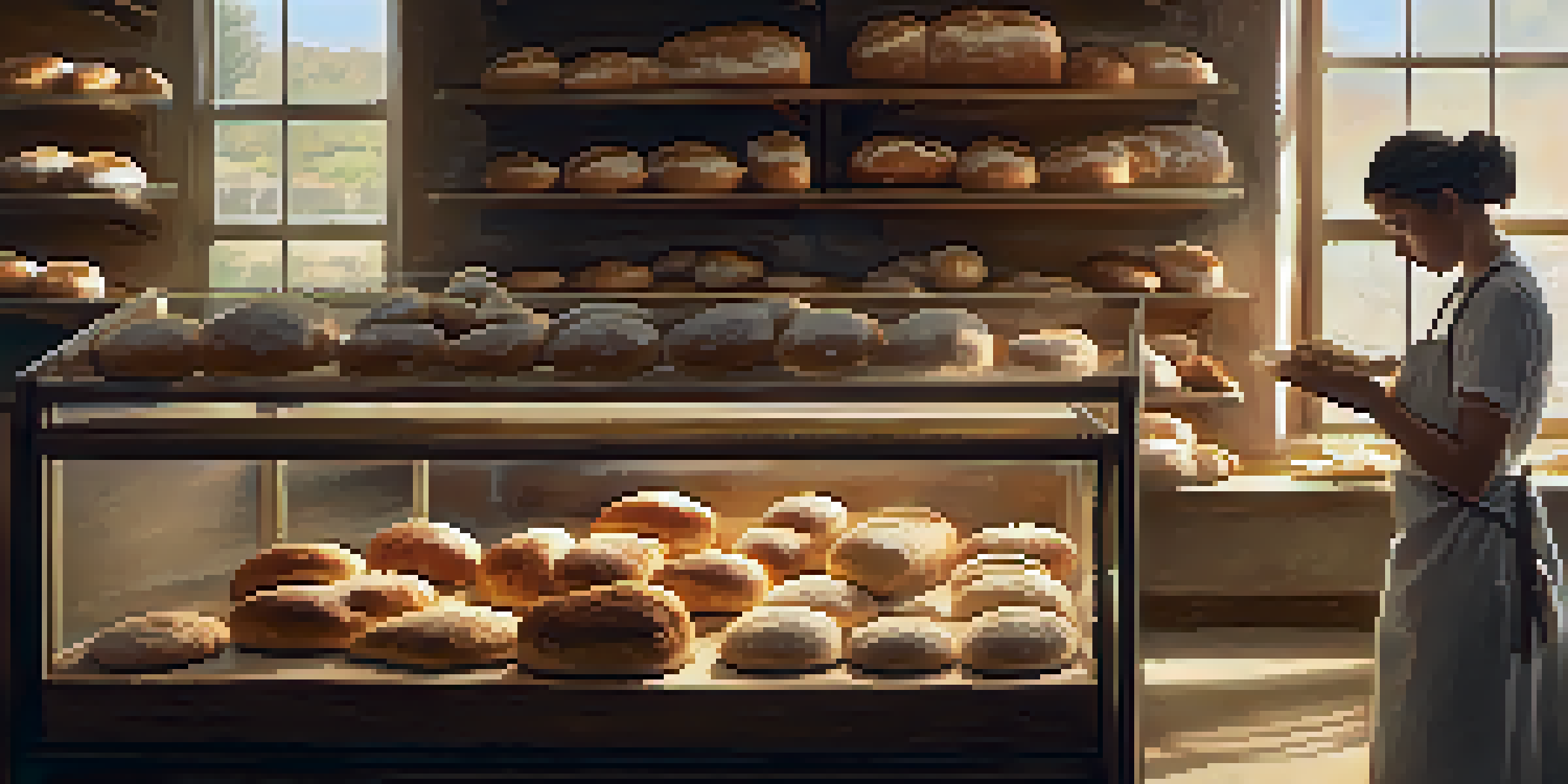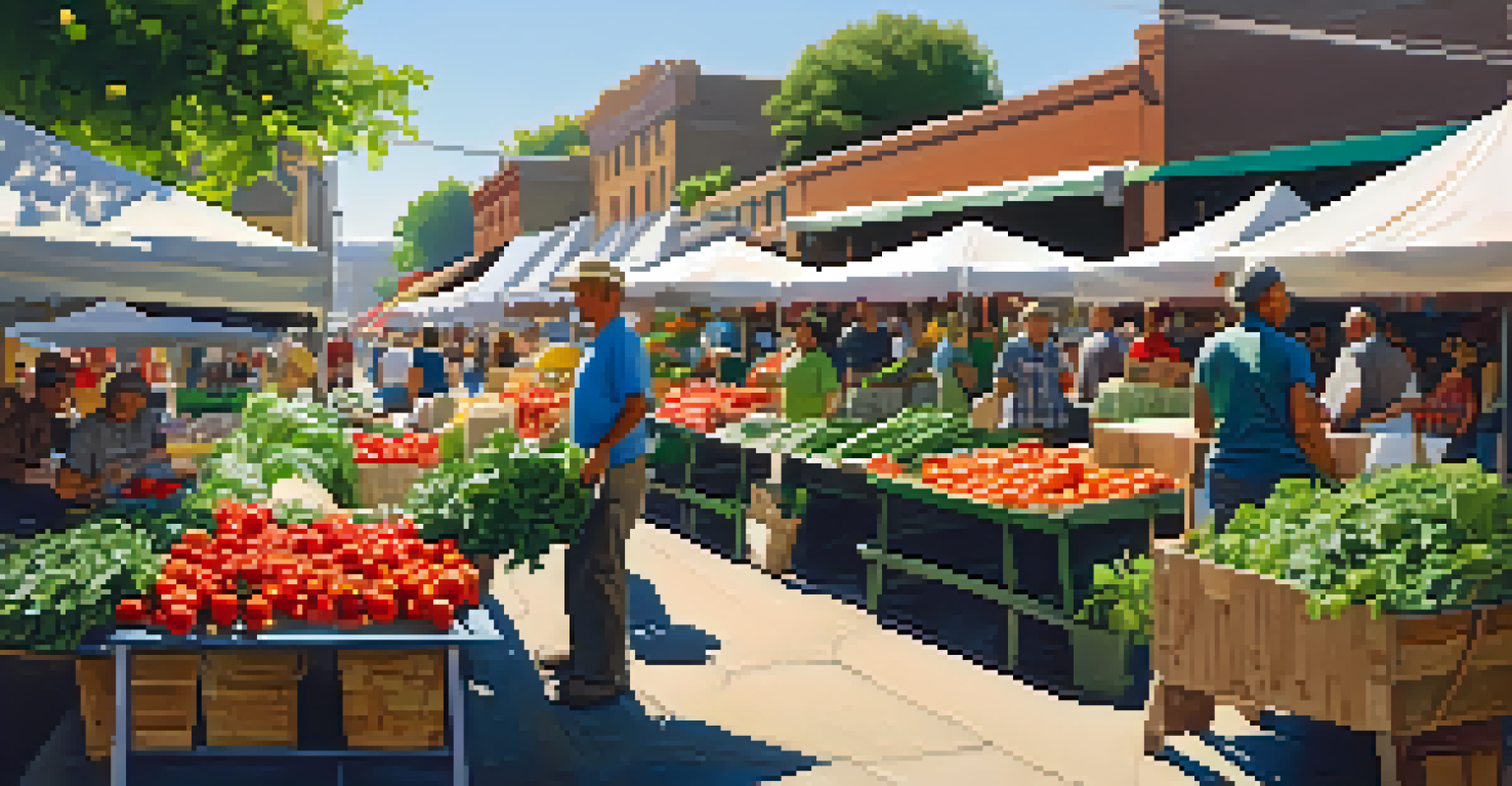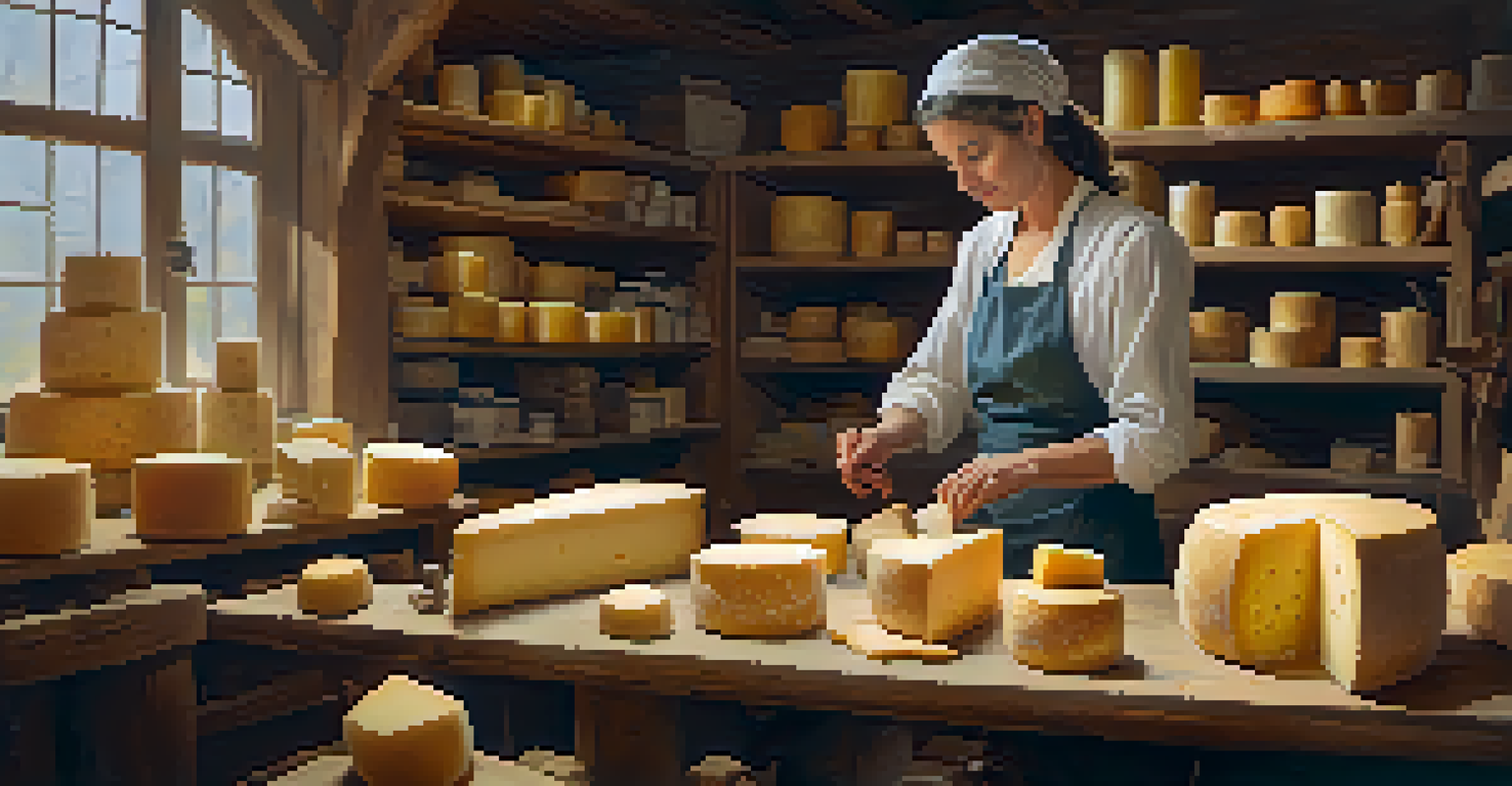The History Behind Artisan Food: A Culinary Exploration

Understanding Artisan Food: More Than Just a Trend
At its core, artisan food represents a commitment to quality, tradition, and craftsmanship. Unlike mass-produced items, artisan foods are often handmade, using high-quality ingredients that reflect local flavors and cultures. This approach emphasizes not just the final product, but the entire process behind its creation, bringing a personal touch to what we eat.
Food is not just what we eat; it is who we are.
Think of artisan bread, for instance. Each loaf is usually crafted from simple ingredients like flour, water, salt, and yeast, yet the care that goes into kneading, shaping, and baking transforms it into something extraordinary. The artisan baker’s dedication to their craft shines through in the texture and flavor of the bread, making it a delightful experience for anyone lucky enough to taste it.
In recent years, there’s been a resurgence in the appreciation of artisan foods, as people seek authenticity and connection to their meals. This movement is not just about food; it’s about culture, community, and the stories that each bite tells.
A Brief History: Roots of Artisan Food Traditions
The history of artisan food can be traced back to ancient civilizations where food was made by hand using traditional methods. These early artisans understood the importance of quality ingredients and often sourced them from local farms, ensuring freshness and flavor. This practice laid the foundation for what we now recognize as artisan food, marrying culinary skill with local resources.

As societies evolved, so too did their food production methods. The Industrial Revolution brought about a shift toward mass production, which, while efficient, often sacrificed the quality and uniqueness of food. However, this change sparked a movement among some to return to traditional methods, emphasizing small-scale production and the art of cooking.
Artisan Food Values Quality and Craft
Artisan food emphasizes high-quality, handmade products that celebrate local flavors and traditional cooking methods.
By the late 20th century, the artisan food movement was gaining momentum, with chefs and home cooks alike rediscovering age-old techniques and ingredients. This revival not only celebrated heritage recipes but also highlighted the importance of supporting local economies and sustainable practices.
Key Ingredients: Local Sourcing and Seasonal Produce
One of the hallmark features of artisan food is the use of locally sourced, seasonal ingredients. This approach not only enhances the flavor of the dishes but also fosters a connection between the consumer and the producer. When you bite into a seasonal tomato in the summer, for example, you’re tasting the essence of that time and place, making every meal a celebration of nature’s bounty.
The future of food is not just about feeding people; it's about feeding their souls.
Artisan producers often build relationships with local farmers, ensuring that their ingredients are fresh and sustainably harvested. This practice not only supports the local economy but also encourages biodiversity, as farmers are more likely to grow a variety of crops rather than focusing on a few high-yield options. The result is a vibrant array of flavors that you simply can’t find in mass-produced foods.
Moreover, seasonal cooking encourages creativity in the kitchen. Chefs and home cooks alike can experiment with whatever is available, leading to unique dishes that reflect the true spirit of the season. This adaptability is part of what makes artisan food so exciting and dynamic.
Craftsmanship: The Art of Artisan Food Production
Craftsmanship is at the heart of artisan food production. Unlike industrial methods that rely heavily on machinery, artisan producers often rely on their hands, intuition, and experience to create their products. This personal touch is evident in the intricate details of handmade cheeses, cured meats, and artisanal chocolates, each telling a story of skill and dedication.
Take, for example, the process of making cheese. From selecting the right milk to aging the cheese in specific conditions, every step requires knowledge and expertise. The craftsman must understand the nuances of temperature, humidity, and fermentation to produce a product that is not only delicious but also unique to their style and environment.
Community Connections Matter
Buying artisan food fosters relationships between consumers and producers, enriching the dining experience and supporting local economies.
This commitment to craftsmanship also means that artisan producers are often more willing to experiment, leading to innovative flavors and products. The result is a diverse landscape of artisan foods, each with its own distinct personality.
Culinary Innovation: Blending Tradition with Modern Techniques
While artisan food is rooted in tradition, it also embraces innovation. Many modern artisan producers are blending time-honored techniques with contemporary culinary trends, creating exciting new products. This fusion allows them to cater to evolving tastes while still honoring the methods that have stood the test of time.
For instance, some bakers are incorporating ancient grains into their recipes, providing a nutritious twist on classic breads. Others might experiment with fermentation techniques that enhance flavors while also offering health benefits. By pushing the boundaries of what artisan food can be, these innovators are keeping the movement fresh and relevant.
This spirit of innovation also extends to the way artisan foods are marketed and presented. Social media has played a significant role in this evolution, allowing producers to share their stories and connect with consumers in new ways. Today, artisan food is not just about what’s on the plate; it’s about the narrative behind it and the community that supports it.
The Role of Community: Building Connections Through Food
Artisan food is not just about individual producers; it’s about the communities they serve. Farmers' markets, local food festivals, and community-supported agriculture (CSA) programs have become vital platforms for artisan food producers to connect with consumers. These venues foster relationships that go beyond mere transactions, creating a sense of belonging and shared values.
When you buy artisan food directly from the producer, you’re not just purchasing a product; you’re supporting a person, a family, and often a way of life. This connection enriches the dining experience, as consumers feel a sense of pride in knowing where their food comes from and the effort that went into making it.
Sustainability Shapes the Future
The future of artisan food is focused on ethical production and sustainability, with trends towards plant-based and zero-waste practices.
Moreover, these community ties promote a sustainable food system, encouraging local economies and reducing the carbon footprint associated with transporting goods over long distances. It’s a win-win situation where everyone benefits, from the producers to the consumers.
The Future of Artisan Food: Trends and Sustainability
As we look to the future, the artisan food movement shows no signs of slowing down. Consumers are increasingly seeking out foods that are not only delicious but also produced ethically and sustainably. This shift in consumer preferences is prompting more producers to adopt environmentally friendly practices, ensuring that artisan food remains a viable option for generations to come.
Trends such as plant-based foods, fermented products, and zero-waste cooking are gaining traction within the artisan community. Many producers are exploring new ways to minimize waste and maximize flavor, leading to innovative products that cater to health-conscious consumers. This evolution is part of a larger movement toward a more sustainable food system.

Ultimately, the future of artisan food is bright, as it continues to adapt and flourish within a changing culinary landscape. With a focus on community, sustainability, and quality, artisan food will remain a cherished part of our culinary heritage.